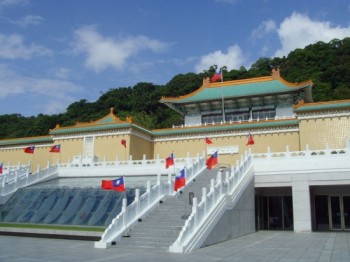Citywalk: Taipei
Taipei boasts a wide variety of scrumptious, regional Chinese cuisines and a few down-home specialties, all of which stem from the island's history.
Take one part local food tradition, which shares much with southeastern Chinese fare and favors fresh seafood, especially oysters. Add a strong dash of Japanese flavor (like wasabi), culled from 50 years of Japanese colonization that ended in 1945. Then mix in some of China's finest cooking traditions from Chongqing to Shenyang (think Sichuan-style gong bao ji ding -- kungpao chicken -- and northern China-style beef noodle soup) brought here by the Mandarin-speaking Kuomintang elite when they fled the mainland, along with their cooks, in the late 1940s. The result: contemporary Taiwanese food.
For a city with a reputation among some foodies for having some of the world's best Chinese food, an eating tour of Taipei is highly appropriate. But it's not for the faint of heart, or small of stomach.
In fact, were you to actually consume all the food and drink on this itinerary, you'd feel more like a nap than a walk. Consider yourself warned: Nibble at the suggested stops, don't fill up. And pick and choose dishes according to your taste, appetite and endurance.
台北以各式中国地方美味和众多特色家常小吃而闻名,而所有这一切都与台湾岛的历史分不开。
首先,选取一部分当地的饮食传统:台北饮食与中国大陆东南地区的食品有很多共同点,比如偏爱新鲜的海味,特别是牡蛎。接下来,再加上一抹浓郁的日式风味(比如绿芥末):这是日本在1945年以前占领台湾50年所遗留下的痕迹。最后,融入中国从重庆到沈阳的那些最优良的烹饪传统:这是二十世纪40年代后期由国民党高官,以及他们的厨师,从大陆带来的(想想川菜中的宫保鸡丁和中国北方的牛肉面)。“当代台湾饮食”就此出炉。
在一些美食家看来,台北拥有世界上最好吃的中餐,所以到台北展开一次美食之旅实在是再合适不过了。但是对于胆子小,抑或是胃口小的游客来说,则要另当别论了。
实际上,当你真正开始按照以下行程品尝过台北美食以后,你会觉得这更像是做了个美梦,而不像是走过一段旅途。要注意:在我们推荐的每一站好去处只可少量品尝,千万别吃饱,而且还要根据自己的口味、胃口和耐力来挑选要品尝的食物。













